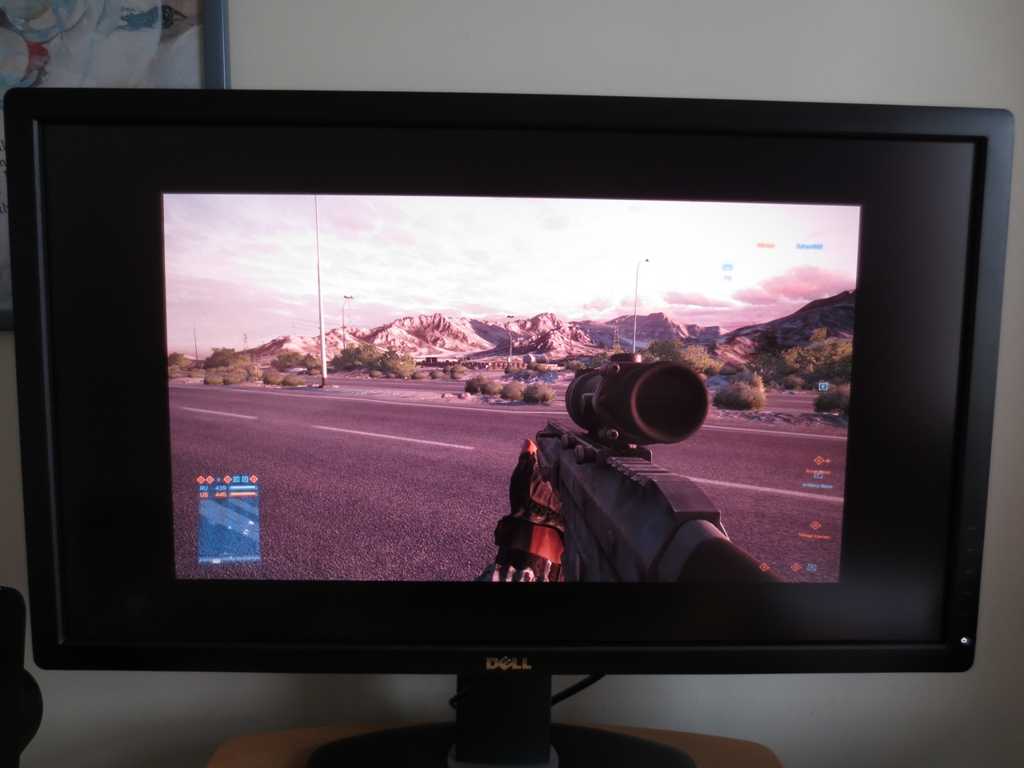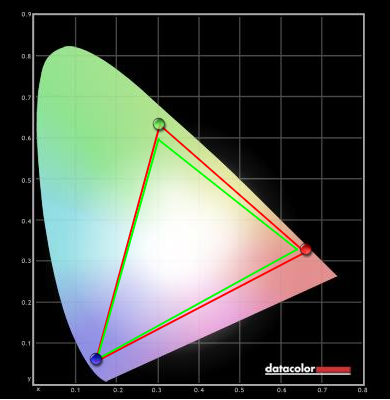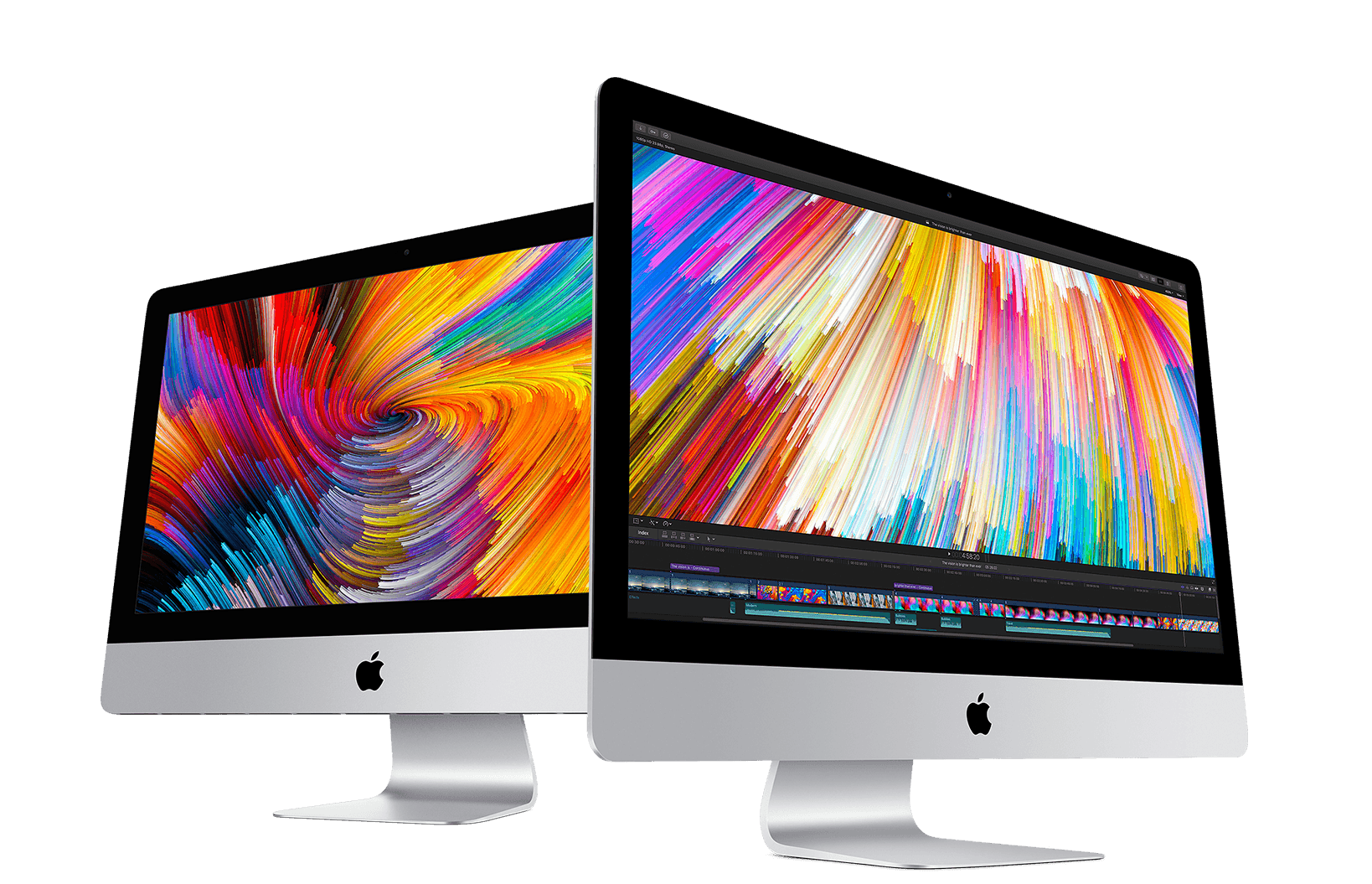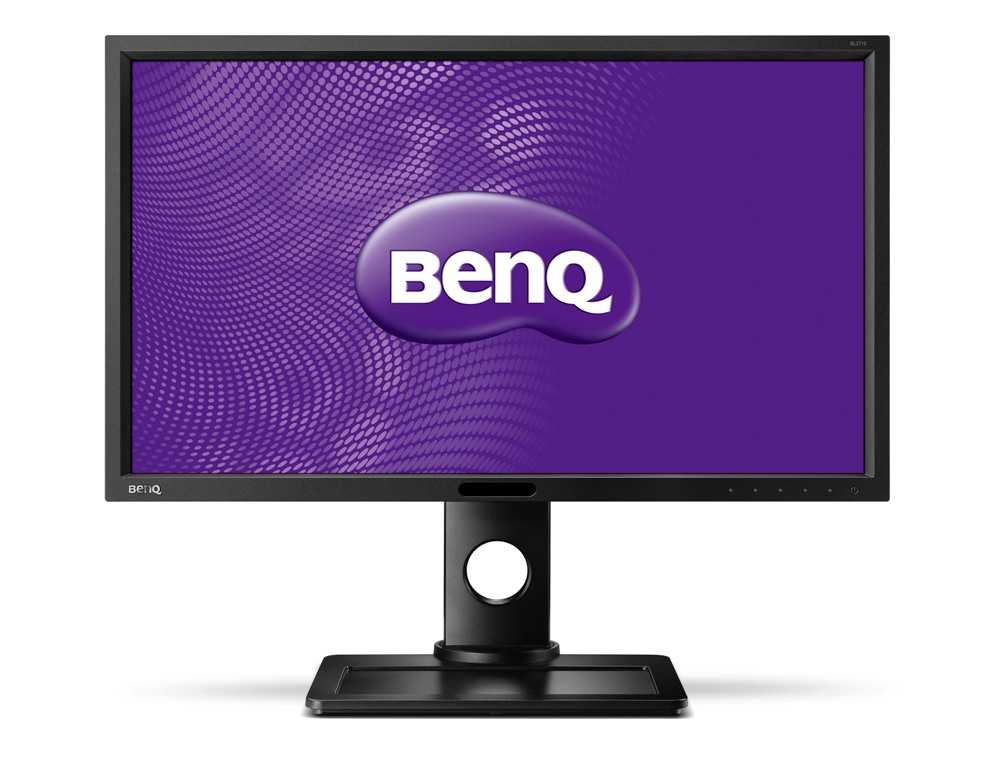Introduction
The 2560 x 1440 (WQHD) resolution and 27” screen size remains the most practical choice for many users. First we saw this restricted to LG’s IPS (In-Plane Switching Panels) and more recently in Samsung’s own version of this, PLS (Plane to Line Switching). There is even a unique TN (Twisted Nematic) monitor from ASUS designed for gaming that sports this resolution – but nothing that can hold a candle to LG IPS or Samsung PLS when it comes to colour accuracy, consistency and viewing angle performance. BenQ panel manufacturer AU Optronics (AUO) has now developed their own IPS-like technology called AHVA (Advanced Hyper Viewing Angle). Despite the confusing choice of letters in the acronym, this is an IPS-mode rather than VA (Vertical Alignment) panel type and is designed to complete with IPS and PLS models. The first monitor to use this novel AHVA panel is the BenQ BL2710PT, which we put through its paces in our usual thorough fashion.
Interpolation
The BL2710PT has a 2560 x 1440 (WQHD) resolution which, when coupled with the semi-glossy screen surface, gives game content a crisp and detailed look. It also gives you a lot of space to play with on the desktop. With 1.77 times as many pixels to push as 1920 x 1080 there may be a temptation for some users to set the monitor into a 1920 x 1080 resolution for extra performance when gaming. With games consoles, even the latest ones like the PS4 and Xbox One, there isn’t the choice of running at a higher resolution anyway.
Running ‘1080p’ on this monitor and allowing it to use interpolation to fit it to the full screen area was not a pretty experience. The first issue is that, as is usual when running a 2560 x 1440 monitor at 1920 x 1080, everything appears very soft. It’s as if you’re looking at the game world through a soft-focus lens with sharpness that is just not comparable to running the resolution on a 27” Full HD display. You can run the monitor in a ‘1:1’ pixel mapping mode which will give a large black border around the image but make things look appropriately sharp. This is shown in the image below on the U2713H – the same screen size and resolution so the same border applies.
The second issue with running 1920 x 1080 on this monitor applies regardless of whether running 1:1 or letting the image fill the entire screen. The contrast is knocked down to very low levels (around 300:1) and everything looks quite flooded and washed out. We don’t recommend gaming at 1080p on this monitor unless it’s unavoidable. Fortunately the monitor handles upscaled content much better – for example playing Blu-rays through the PC at 2560 x 1440. There was a slight softening on the Blu-rays we watched but nothing too severe. Things still looked distinctly ‘Blu-ray like’ without any real detail being lost. Bear in mind that plugging a Blu-ray player into the monitor rather than using a drive on the PC will force the screen to run at 1920 x 1080 with the aforementioned issues applying.
Conclusion
The BenQ BL2710PT marks a bold step from their panel manufacturer AUO into uncharted territory. Even if this wasn’t their first attempt at the IPS-like ‘AHVA’ panel technology, we’d give them plenty of credit for what they’ve achieved. It seems they have carefully observed the improvements made by LG Display to their IPS panels and have kept an eye on Samsung’s PLS models and made sure the first generation of their technology can compete with the newest IPS and PLS models.
As with other ‘IPS-type’ panels, there was a certain ‘glow’ affecting parts of the monitor from a normal viewing position and becoming quite obtrusive at times from varied viewing angles. Overall the contrast performance was really much as we’ve seen on other recent WQHD models. A huge improvement over older IPS models but not a scratch on the Vertical Alignment technology that AUO are famous for. The screen surface adopted by AUO was very similar to that seen on some of their latest VA models and we felt that was a positive thing as far as image clarity and vibrancy was concerned.
The colour performance, of course, is where most of the credit is due. BenQ included a range of presets and ‘Gamma’ modes, but we found performance most pleasing in the default ‘Standard’ preset after adjusting brightness and ‘Gamma’ mode. White point was not quite dot on the 6500K daylight target and gamma was just a little way from the target of ‘2.2’ but things were close. This setting complimented by the generous colour gamut, strong colour consistency and very light matte screen surface gave a very pleasing colour performance during our testing. It was possible to get things closer to the targets by making use of the ‘User’ preset. Unfortunately this introduced some odd ‘pinstripe’ banding for some shades and muddied the appearance of others.
BenQ also seemed to have carefully watched how various IPS panels have approached their grey to grey acceleration over the years. With their default ‘AMA High’ setting they’ve achieved very good balance here, managing to keep a conservative but effective level of acceleration and a completely artifact-free experience. The unit we tested had a moderate degree of input lag but nothing unusual for a WQHD monitor with such a broad range features and ports. This is something that some users may take issue with, but the majority shouldn’t. If you’re not sure if this will affect you then chances are it won’t.
Overall we have to give BenQ credit for this valiant first attempt at a WQHD IPS-like monitor. A strong performance was complimented by an excellent robust and fully adjustable stand, plenty of ports and a reasonable price for this level of quality. This may not be the first monitor that springs to mind when people consider the 2560 x 1440 options available, but it certainly deserves careful consideration.
| Positives | Negatives |
| Solid colour performance with plenty of rich variety, a nice semi-glossy screen surface and good performance following minimal tweaking | Fine-tuning the colour channels is only possible in the ‘User’ preset and this preset suffers from some unusual ‘pinstripe banding’ and muddying of some shades |
| Contrast performance on-par with modern IPS and PLS rivals overall and pleasing colour temperature and black uniformity from our test sample | ‘AHVA glow’ was present in much the same way as ‘IPS glow’ or ‘PLS glow’. Following the corrections made to better calibrated presets such as ‘Standard’ contrast dropped a bit to around 835:1 |
| Well balanced pixel overdrive produced a good level of acceleration without introducing any inverse ghosting at all | A moderate degree of input lag and just a little bit of trailing that went beyond the scope expected from an optimally tuned 60Hz monitor |
| A solid design, plenty of ports, high resolution and some nice extras such as auto pivot, an ambient light and proximity sensor | Poor performance when running at 1920 x 1080 |
As an Amazon Associate I earn from qualifying purchases made using the below link.
|
|
Donations are also greatly appreciated.
Colour reproduction
Colour gamut
The BenQ BL2710PT offers complete coverage of the sRGB colour space with slight extension beyond in some areas. This is still considered a ‘standard gamut’ screen and is able to faithfully reproduce content designed with sRGB in mind. The image below shows the colour gamut under our test settings. This varied very little regardless of preset, including in the ‘sRGB’ preset.

Colour in games and movies
Battlefield 4 had a varied and inviting look with plenty of depth and shade variety. Some of the deeper green shades were impressively lush whilst lighter green shades and dusty khaki colours showed excellent variety and an appropriately muted appearance. There were plenty of lively shades, too, such as some fairly striking cyans from the engineer’s blowtorch flame and in-game markers. Various red elements (such as painted emblems of some vehicles) and orange flames were also quite striking in their vividness without appearing oversaturated or out of place.
The colour performance was very pleasing in Dirt 3. Car liveries showcased an excellent variety of strong, vibrant and smooth-looking colours. The closest to a ‘painted on’ glossy-look to colours that you’ll see on a monitor with a matte screen surface. It’s difficult to pick stand-out colours here, but some of the rich reds and dark greens were particularly impressive. The natural environments had an excellent range of natural colours. The greens of the Finnish forest highlighted the range and consistency of colours that this monitor can provide very well indeed.
The Skyfall Blu-ray looked very much as it should with appropriate skin tone range and saturation. Natural environments also had a good rich and natural look with pleasing variety. There were plenty of good eye-catching vibrant shades, where it was appropriate. Some excellent bright cyans, deep reds and bright oranges were particularly noteworthy.
Futurama: Into the Wild Green Yonder showed an impressive variety of shades. Bright colours such as neon greens, yellow and pinks stood out very well. Deep purples, reds and oranges were also displayed in a good solid and bold way. Subtle variations in pastel shades, such as pink and brown skin tones, were also very impressive in their consistency at different points of the screen. This sort of consistency is typical of IPS-type panels.
Viewing angles
We further analysed colour consistency using Lagom’s tests for viewing angle. The following observations were made, highlighting excellent colour consistency on the monitor.
- The purple block was a very consistent purple without any obvious pink hue.
The red block appeared a fairly rich and consistent red throughout without pink tints.
The green block appeared a reasonably deep green throughout without an obvious yellow hue or any noticeable inconsistencies.
The blue block was a good solid and deep blue throughout.
The Lagom text blended grey throughout. This showed very little viewing angle dependency to the gamma curve as you would hope for from an IPS-type (AHVA) panel. We also captured the results of the Lagom text test from various viewing angles in addition to a mixed and dark desktop background. The video below highlights the strong viewing angle performance of the monitor and also shows the aforementioned ‘AHVA glow’ as it appears from differing viewing angles.
Specifications
The monitor uses a 27” AU Optronics AHVA panel which is capable of outputting ‘true 8-bit’ colour per subpixel and pumping out 1000:1 static contrast. There is a ‘WQHD’ resolution and a specified grey to grey response time of 4ms. For your reading convenience the key ‘talking points’ of the specification have been highlighted in blue below.
Screen size: 27 inches
Panel type: AU Optronics M270DAN01.0 AHVA (Advanced Hyper Viewing Angle) LCD
Native resolution: 2560 x 1440
Typical maximum brightness: 300 cd/m2
Colour support: 1.07 billion (8-bits per subpixel plus dithering)
Response time (G2G): 4ms
Refresh rate: 60Hz
Weight: 8.2kg
Contrast ratio: 1,000:1
Viewing angle: 178º horizontal, 178º vertical
Power consumption: 39.2W typical
Backlight: WLED (White Light Emitting Diode)
Typical RRP as reviewed: £480 ($600 USD)
Calibration
Testing the presets
The BenQ BL2711PT has broad range of presets referred to as ‘Picture Modes’ and using what BenQ dub ‘Senseye3’ technology; ‘sRGB’, ‘CAD/CAM’, ‘Present’, ‘Standard’, ‘Movie’, ‘Photo’, ‘Reading’, ‘Eco’, ‘M-book’ and ‘User’. Different presets have different options available – the most flexible and useful of which are ‘Standard’ and ‘User’ which give the user access to 5 different ‘Gamma’ settings. Rather than testing each of the presets and documenting them, we’ll be focusing on the ones we feel are most useful (as well as unique) and looking at how those ‘Gamma’ settings affect performance.
The table below gives some key readings (taken using a Spyder4Elite colorimeter) and information about the presets we chose to test in detail for the review. Our test system used an Nvidia GTX 780 connected by DisplayPort. We tested HDMI and DVI and found that the image looked very much the same. The HDMI signal provided a full 2560 x 1440 @ 60Hz with proper ‘Full Range RGB’ colours which we don’t always see on these WQHD monitors. Most other modern Nvidia and AMD GPUs should get a similar image over DVI, DP and HDMI, too.
| Monitor Profile | Gamma (central average) | White point (kelvins) | Extra OSD features | Notes |
| ‘Standard’, Gamma 1 | 1.7 | 6606K | Gamma, Color Temperature, Eye Protect | Bright with a washed out (faded) look but good white balance. |
| ‘Standard’, Gamma 2 | 1.9 | 6579K | Gamma, Color Temperature, Eye Protect | As ‘Gamma 1’ with extra depth, but still quite a washed out look. |
| ‘Standard’, Gamma 3 | 2.1 | 6662K | Gamma, Color Temperature, Eye Protect | White balance is slightly off-target with a relatively strong blue channel and weak green channel, but the overall depth is good and colours look quite well balanced. |
| ‘Standard’, Gamma 4 | 2.3 | 6716K | Gamma, Color Temperature, Eye Protect | A good vibrant but well-balanced look overall with some more depth compared to ‘Gamma 3’. A slightly cool tint with slight green channel weakness. |
| ‘Standard’, Gamma 5 | 2.4 | 6785K | Gamma, Color Temperature, Eye Protect | Even more depth and a cooler tint than ‘Gamma 4’ – slightly too much depth to many shades giving a somewhat oversaturated look. |
| ‘sRGB’ | 2.4 | 6436K | Red channel is slightly too dominant and there is again too much depth (as with ‘Gamma 5’). | |
| ‘CAD/CAM’ | 2.5 | 5859K | A warm and green tint with extreme oversaturation. This mode is designed specifically to highlight wireframe meshes and other such features when designing. | |
| ‘Present’ | 1.3 | 5814K | A very flooded and under-saturated look (the polar opposite of ‘CAD/CAM’ mode). This preset is designed to simulate what your work might look like once outputted to a typical projector. | |
| ‘Reading’ | 1.9 | 5802K | This mode is somewhat dimmer with a warmer tint, designed for comfortable reading or evening computer use. Lower brightness is still recommended | |
| ‘User’ (Color Temperature= User Define) | 2.1 | 6611K | Gamma, Color Temperature (including ‘User Define’), Hue, Saturation | As ‘Standard – Gamma 3’ with a warm green tint. |
| Test Settings 1 (‘Standard’ modified as below) | 2.3 | 6611K | Gamma, Color Temperature, Hue, Saturation, Eye Protect | Very rich and varied shades, pleasing balance with an accurate representation of colours overall. |
| Test Settings 2 (‘User’ modified as below) | 2.2 | 6506K | Gamma, Color Temperature (including ‘User Define’), Hue, Saturation | Good balance and a rich look overall. Some shades are a bit problematic as described below. |






























